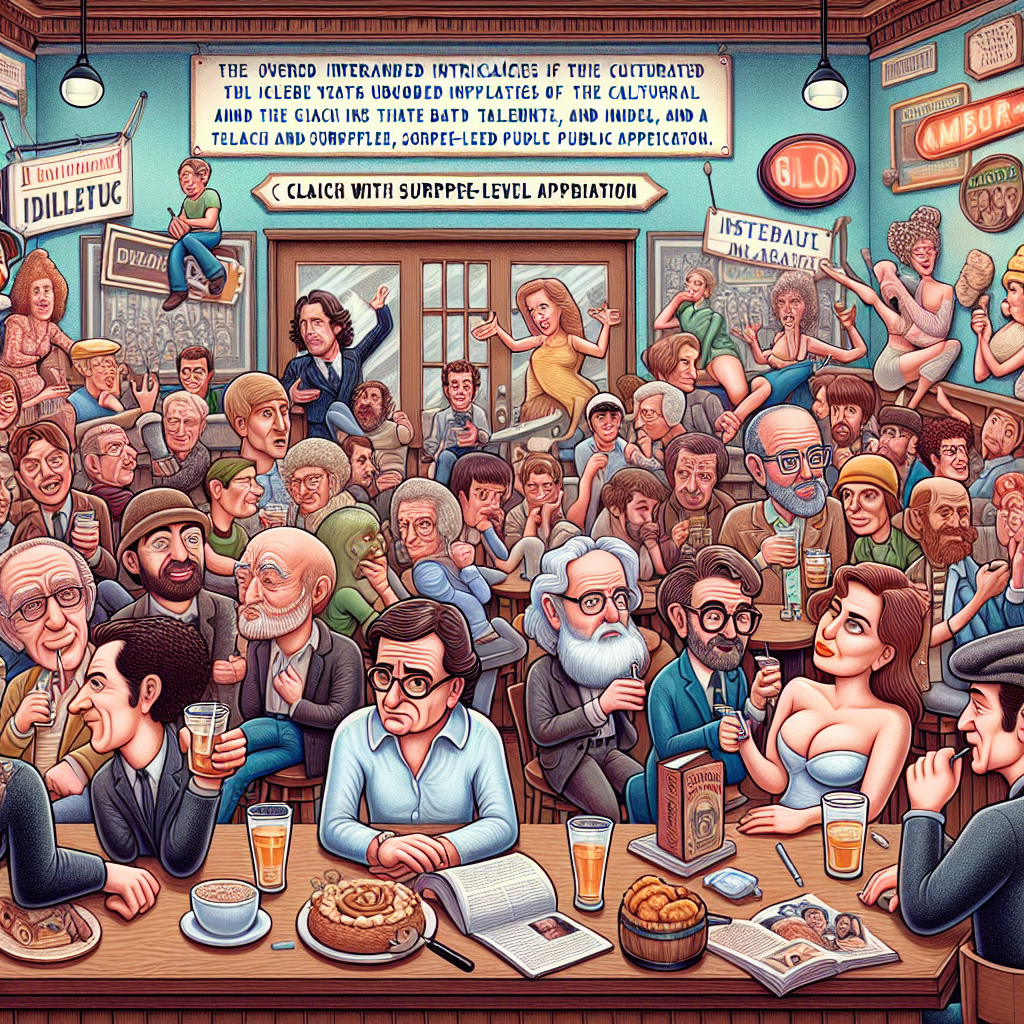George Wendt’s Passing and the Cultural Myopia of Contemporary Celebrity Reverence

In the lamentable event of George Wendt’s demise at the age of 76, one cannot help but ruminate on the peculiar manner in which contemporary society venerates celebrity figures, often overlooking the nuanced contributions of such individuals to our collective cultural patrimony. While the ubiquitous headlines trumpet the cavalier tidings of a beloved actor's passing, a critical examination reveals a lamentable diminution of appreciation in the realm of artistic merit and cultural significance.
George Wendt, immortalized chiefly through his quintessential portrayal of Norm Peterson on the seminal television series Cheers, embodies a certain zeitgeist of American television history—a paragon of the archetypal “everyman” imbued with wit, pathos, and an endearing sardonicism. However, the superficial eulogies promulgated in the wake of his death echo a truncated narrative that barely scratches the surface of Wendt’s wider artistic endeavors and his impact on televisual storytelling.
It is almost a Sisyphean task to impress upon the intellectually depraved forum that modern media culture suffers a malady tantamount to barbarismus—a cultural barbarism that dismisses profundity in favor of facile sentimentality. The public discourse surrounding Wendt’s passing, bereft of substantive critique or acknowledgement of his range as a thespian, serves to perpetuate this trend. We encounter instead the vapid repetitiveness of reductive laudations, emphasizing his “everyman” persona whilst neglecting the complexity inherent in the character and the actor’s craft.
To comprehend the true gravity of Wendt’s contribution requires an excursus into television history, where Cheers positioned itself as a social microcosm emblematic of late 20th-century American urbanity. Wendt’s Norm, with his eternal bar stool occupancy and inexhaustible repartee, was not merely a comic relief; he represented the socio-economic undercurrents and existential ennui of a denizen of the common man. His character was a vessel through which issues of camaraderie, addiction, and mediocrity were articulated with a deft hand rife with both humor and gravitas.
Yet, in the ephemeral annals of digital news cycles, such profundities are eviscerated in favor of reductive soundbites and opportunistic clicks. It is a lamentable testament to contemporary cultural consumption that the death of a figure such as Wendt becomes little more than fodder for transient nostalgia, rather than an opportunity for learned discourse on television as an art form and social commentary.
Moreover, the uncritical lionization invites a broader meditation on the celebrity-industrial complex and its pernicious effects on public memory. Wendt’s persona, indelibly linked with Norm Peterson, becomes a simulacrum that obscures the actor’s multifarious capabilities and the ideological substratum of the series itself. The reduction of a complex figure to a single dimension is a manifestation of what Umberto Eco described as the “mass culture” phenomena, whereby mass media insidiously reduces cultural artifacts to consumable commodities devoid of intellectual engagement.
In juxtaposition, a more erudite and conscientious approach would entail situating Wendt’s oeuvre within the lineage of American comedic and dramatic expression, tracing how his performances influenced subsequent character archetypes and narrative architectures. Such analysis would acknowledge the dialectic interplay between actor and character, media product and audience reception, thereby accomplishing a more holistic and dignified remembrance.
One must also consider the temporal aspect of Wendt’s passing vis-à-vis the larger socio-political tableau. During an era marked by rapid sociocultural transformation and profound existential anxieties, recollecting the cultural artifacts of the recent past, such as Cheers and its denizens, might proffer valuable insights into the collective psyche of preceding generations. Rather than trivialize or mythologize without discernment, a more sagacious engagement would extract lessons from the humor and humanity that shaped Wendt’s performances, asserting their relevance within ongoing dialogues about identity, belonging, and communal solidarity.
In conclusion, the mortality of George Wendt compels a reconsideration not merely of an individual’s life but of the collective myopia that afflicts how we, as a society ostensibly steeped in culture, honor and remember its contributors. His demise is an exemplar of the broader phenomena whereby cultural figures are flattened into the ephemeral and consumable, rather than enduring subjects of critical engagement and recognition.
Thus, before we entomb George Wendt’s legacy in facile homage, we should instead endeavor to resurrect the intellectual rigor that such a figure deserves. One might hope that future commemorations transcend the banalities of celebrity eulogy and instantiate a more elevated discourse—one befitting the actor, the art, and the enduring cultural narratives that he so memorably helped to craft.

